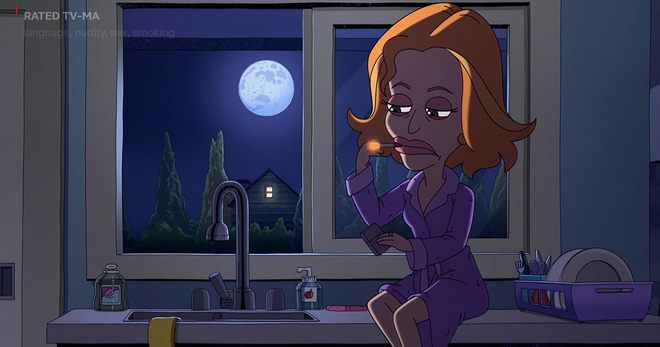Music videos popular with young people frequently feature tobacco imagery
Nearly a quarter (23%) of music videos for top 2020 Billboard songs depicted tobacco imagery, garnering more than 6 billion views on YouTube alone, according to the latest Truth Initiative report on tobacco imagery across screens.
Truth Initiative’s fourth annual report on the topic, “While You Were Streaming: Nicotine on Demand,” found that, as people streamed more content than ever in 2020, young people were bombarded with tobacco imagery across entertainment sources– including shows, movies, and music videos – posing a significant threat given the on-going youth e-cigarette epidemic.
Music videos, examined for the first time in this report, are a major pop culture influence and prove to be common sources of tobacco imagery. An analysis of the top 2020 Billboard songs finds that 23% of the songs had tobacco in their music videos, with a large proportion of the tobacco incidences featured in R&B/Hip-Hop videos. Videos with the most amount of tobacco depictions include “Bandit” by JuiceWRLD, “Party Girl” by StaySolidRocky, “My Oh My” by Camila Cabello, and “Heartless” by The Weeknd. Cigarettes were the most common (44.9%) tobacco product depicted although nearly as much (39.8%) tobacco use was “unclear,” meaning coders were unable to determine product type, including whether the product depicted was marijuana or a cigar. Several music videos in the top 2020 also included instances of e-cigarette imagery.
Tobacco-laden music videos yield 6 billion YouTube views
Music videos with tobacco imagery were viewed more than 6 billion times on YouTube alone, according to the report. The nature of music video virality among young people suggests that, at a minimum, these videos had significant youth views. And because music videos are short and often watched on phones, young people are likely absorbing tobacco imagery without parental oversight or knowledge.
Findings are in line with past research that indicates that tobacco use in popular music videos is pervasive and on the rise. More than half (50.7%) of music videos for the top 50 R&B/Hip-Hop songs in 2016 contained combustible use, electronic use, or smoke or vapor, up from 40.2% in 2015, according to research published in JAMA Internal Medicine by researchers at Geisel School of Medicine at Dartmouth and Johns Hopkins University.
Exposure to e-cigarettes in music videos tied to higher e-cigarette use in young adults
Exposure to music videos with e-cigarette imagery was associated with higher likelihood of e-cigarette use in young adults, according to a 2021 study published in Health Education & Behavior by researchers at the University of Southern California, Los Angeles. Young adults between the ages of 18-24 residing in California who were exposed to music videos with e-cigarette imagery were more than three times more likely to report using e-cigarettes in the past month and nearly three times as likely to report using e-cigarettes in their lifetime compared to those with no exposure. Young adults with greater levels of exposure were more likely to report using e-cigarettes compared to those with lower levels of exposure, suggesting that how much imagery young people are exposed to matters. Those younger than 21 – the legal age to purchase tobacco products – who were exposed to any e-cigarette imagery in music videos were nearly five times more likely to report using e-cigarettes in their lifetime compared to those above age 21.
This evidence adds to research that shows links between tobacco imagery in shows and movies. A landmark 2020 Truth Initiative study found that compared to no exposure, high exposure to tobacco imagery through episodic programming can triple a young person’s odds of starting to vape, building on well-established research that shows exposure to smoking in movies causes young people to start using tobacco.
Truth Initiative is calling for a comprehensive set of policies to curb tobacco depictions on screens, including urging content creators to develop transparent anti-tobacco policies and certify that they have not received any tobacco industry payoffs, among other necessary actions. Learn more at “While You Were Streaming: Nicotine on Demand.”
More in tobacco in pop culture
Want support quitting? Join EX Program
By clicking JOIN, you agree to the Terms, Text Message Terms and Privacy Policy.
Msg&Data rates may apply; msgs are automated.



